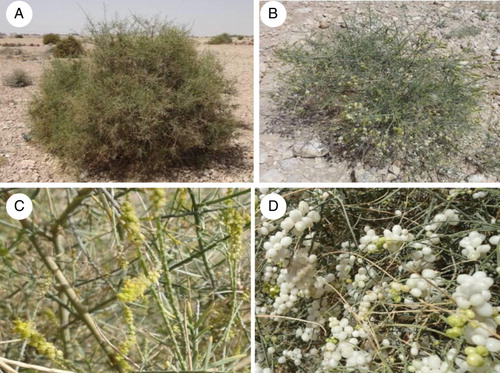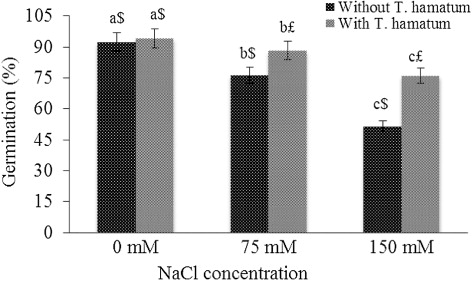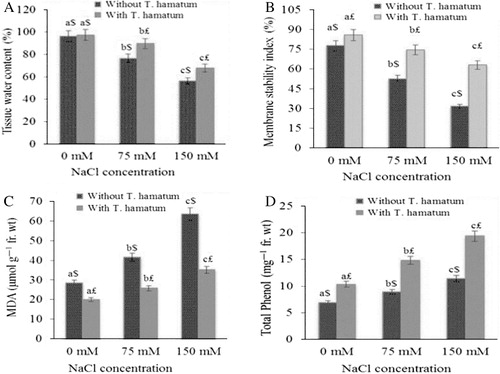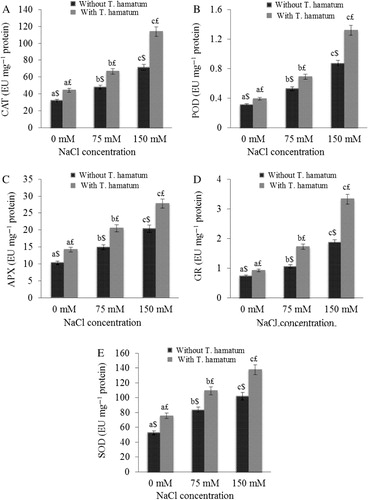Figures & data


Table 1. Effect of NaCl in presence and absence of T. hamatum on growth and biomass yield of O. baccatus seedlings.
Table 2. Effect of NaCl in presence and absence of T. hamatum on pigment content (mg g−1 fresh weight) of O. baccatus seedlings.

Table 3. Effect of NaCl in presence and absence of T. hamatum on TLs and neutral lipids of O. baccatus seedlings.

